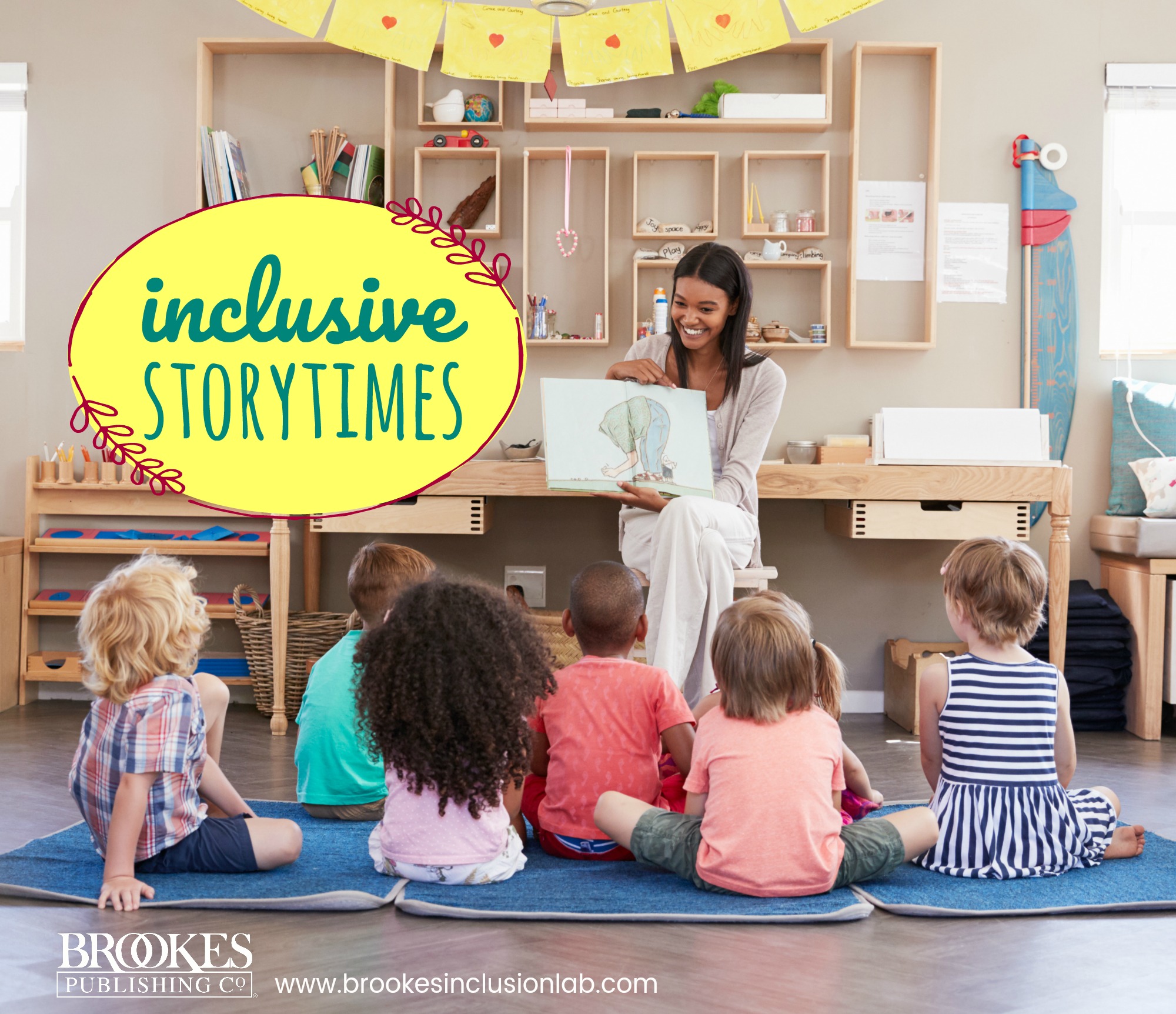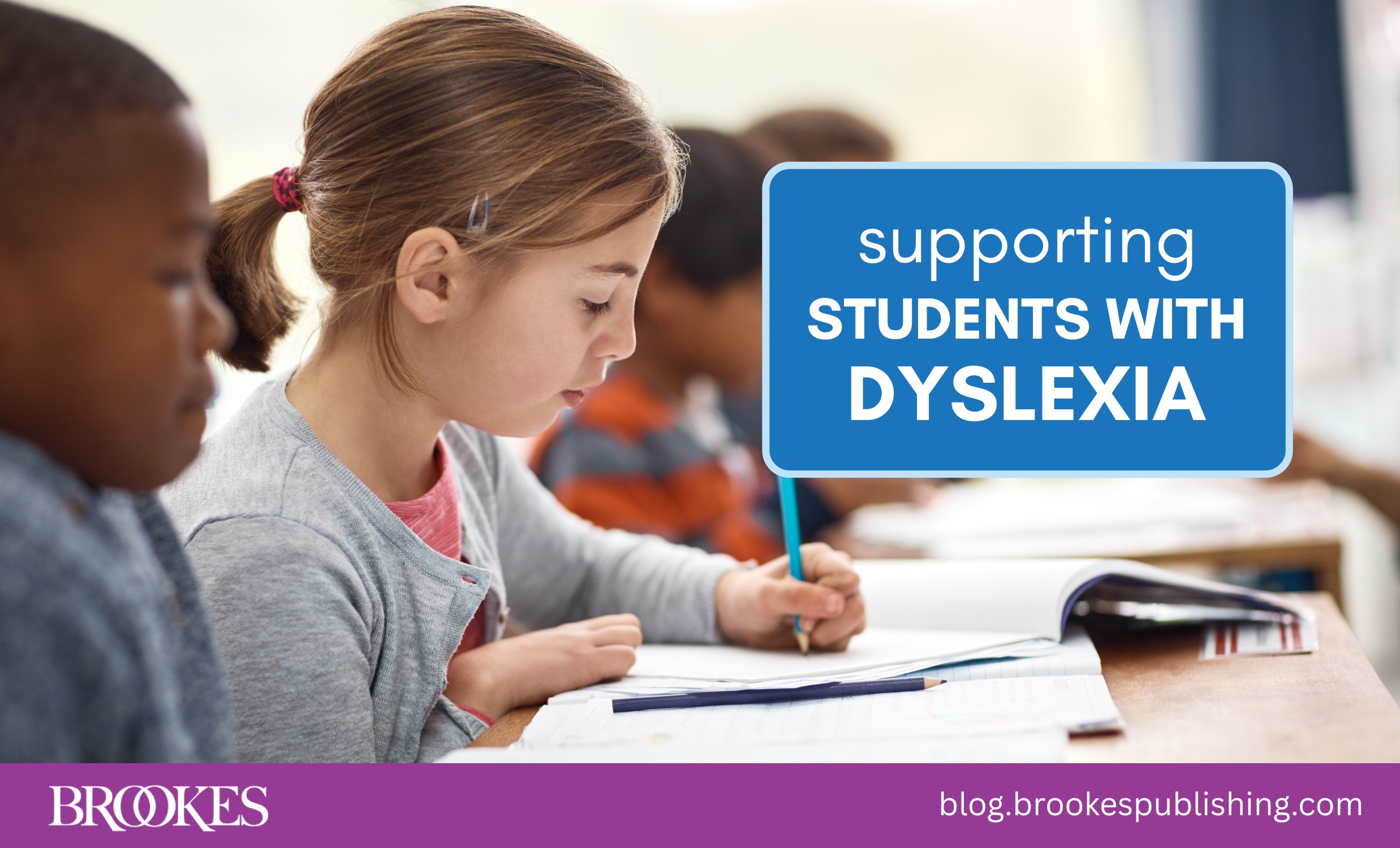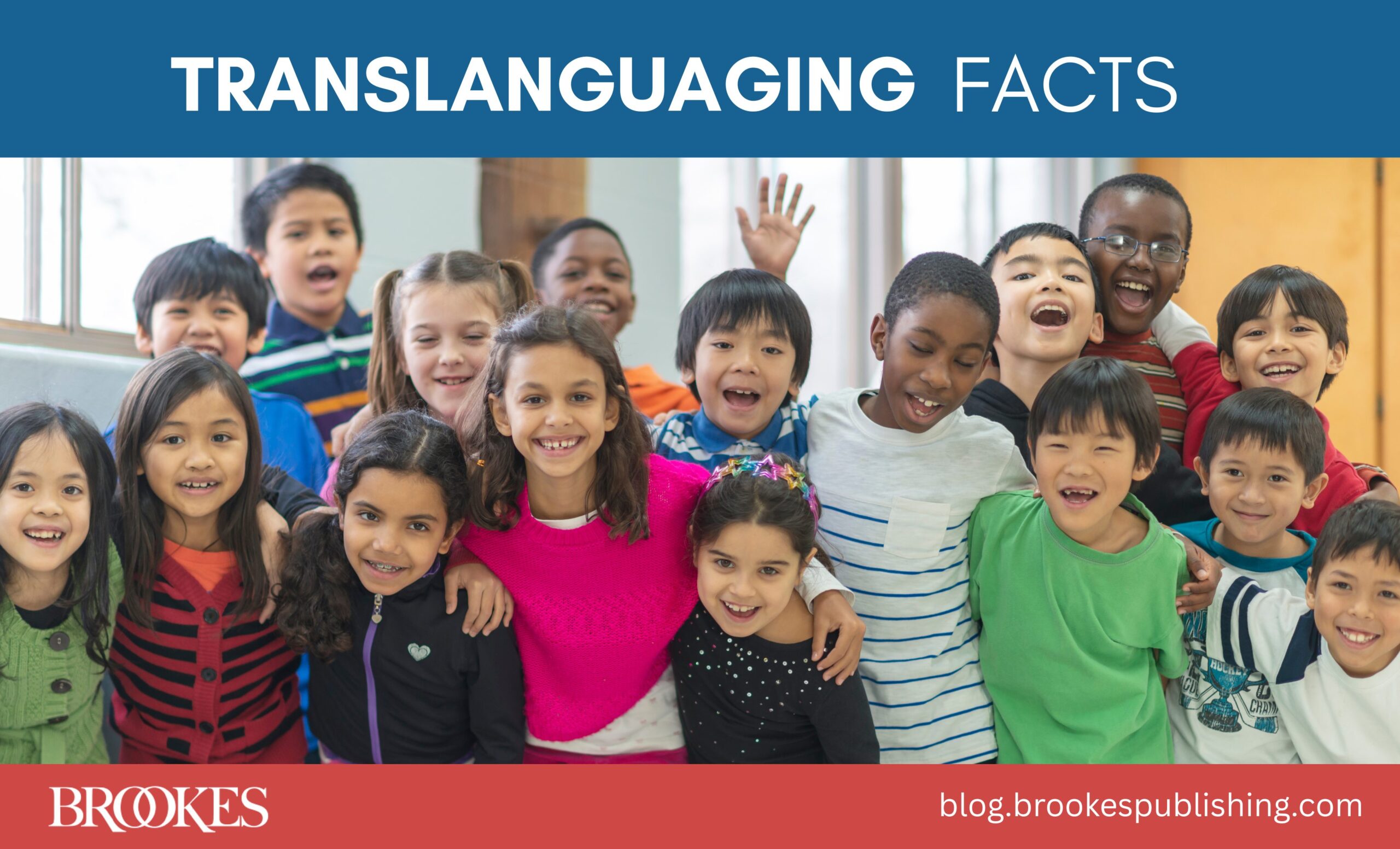14 Ways to Make the Most of Storytime in Your Inclusive Early Childhood Classroom
May 16, 2018
ANNOUNCEMENT: Before we get into this week’s post, a quick special announcement. We’ve randomly chosen the winner of last week’s final inclusion tote bag/mini-library giveaway. The lucky winner is:
Beth Sipe
Congrats, Beth! We’ll be in touch with you to get your addresses and send you your books and tote bag. Enjoy your prizes! And if you didn’t win this time, keep your eyes peeled for future giveaways—we’ll be doing more to ring in the next school year.
And now, on to this week’s post:
Storytime is one of the richest learning experiences an early childhood classroom has to offer. Not only is it a fun social experience to share together, it also gives kids foundational knowledge about letters and sounds, story structure, and other core elements of early literacy.
In your inclusive classroom, how can you be sure that all your learners are fully engaged in storytime and reaping its many benefits? Today’s post gives you more than a dozen tips on making the most of your shared reading time–and ensuring that it’s an effective, inclusive learning experience for children of all different backgrounds and ability levels. (Have your own favorite ideas? Share them with us in the comments section!)
Conduct an inventory. Take an in-depth look at the books on your classroom shelf. Analyze their characteristics: Are they in good condition? Do you offer texts with a range of topics and difficulty levels? Are the illustrations high-quality? Is there enough diversity among characters and in the types of stories you offer?
 Expand your library. Different types of children’s books offer different enriching experiences for your learners. Storybooks are great for vocabulary development. Alphabet books help kids learn about letters and sounds, while counting or number books can expand early math and concept knowledge. Informational books help children develop general knowledge and encourage curiosity about their world. Word play books and poetry may help boost phonological awareness. Maximize your students’ literacy opportunities by ensuring that your shelves are stocked with all of the above!
Expand your library. Different types of children’s books offer different enriching experiences for your learners. Storybooks are great for vocabulary development. Alphabet books help kids learn about letters and sounds, while counting or number books can expand early math and concept knowledge. Informational books help children develop general knowledge and encourage curiosity about their world. Word play books and poetry may help boost phonological awareness. Maximize your students’ literacy opportunities by ensuring that your shelves are stocked with all of the above!
Schedule shorter read-aloud times each day. Most young children have trouble sitting and paying attention for long periods of time. Evaluate your students’ needs and adjust the length of your read-aloud sessions accordingly. Two or even three short read-aloud sessions at predictable times each day will be far more effective than one long session.
Use your hands when you read. Follow the words in a storybook with your fingers so young children begin to understand that reading goes from left to right and from top to bottom in English. Point to objects in the pictures, ask children to point to objects you name, and ask children to name objects when you point to them.
Get it on tape. When you’re the reader, sometimes it’s hard to assess how all your students are engaging with storytime. Consider videotaping your small- or large-group book-reading sessions to review and analyze the quality of your book-reading and children’s engagement.
 Try smaller groups and cozy nooks. Reading in smaller groups or in more comfortable areas (for example, on pillows in a library corner) will give your reluctant readers a better chance to interact with books–and may make it easier for you to pick up on nonverbal responses. PAVEd for Success authors Claire Hamilton & Paula Schwanenflugel recommend that children participate in a minimum of one large-group book reading per day and three small-group book readings of 5 to 7 children per week. You might try even smaller groups for children who are English language learners or have disabilities.
Try smaller groups and cozy nooks. Reading in smaller groups or in more comfortable areas (for example, on pillows in a library corner) will give your reluctant readers a better chance to interact with books–and may make it easier for you to pick up on nonverbal responses. PAVEd for Success authors Claire Hamilton & Paula Schwanenflugel recommend that children participate in a minimum of one large-group book reading per day and three small-group book readings of 5 to 7 children per week. You might try even smaller groups for children who are English language learners or have disabilities.
Use a flannel board to make storytelling more creative and offer your learners more visual support during shared reading. Supplement the story with a visual presentation using the flannel board characters and offer them to children in the library corner to give them more interactive ways to engage with and understand the story.
Consider using digital books. Using a projector to display the book during group reading sessions will ensure that all students can see the images and helps meet the needs of children with postural or visual impairments. Some digital books may also include simple animations or video clips to help explain key concepts and enhance children’s understanding.
 Introduce books by taking a “book walk.” You don’t have to move from your chair to take a book walk–just show your students the pictures in the book before you read it and ask them what they think the book is about. A quick advance walk through the book helps engage students with the story and primes them for understanding by supplying them with key information about the characters ahead of time.
Introduce books by taking a “book walk.” You don’t have to move from your chair to take a book walk–just show your students the pictures in the book before you read it and ask them what they think the book is about. A quick advance walk through the book helps engage students with the story and primes them for understanding by supplying them with key information about the characters ahead of time.
Choose books that have repeating and predictable patterns of text. Kids learn quickly, for example, that the pigs in The Three Little Pigs are going to say, “Not by the hair of my chinny chin chin!” Repetitive books like these allow children to more easily participate in story reading (and the repetition can help English language learners acquire new words).
Support children with visual impairments by reading in an animated way, varying pitch and volume to maintain children’s interest. Provide a description of what appears in the illustrations once you’ve finished reading a page.
Support children with language impairments by giving the child time to process the language through frequent pausing. Avoid reading too fast for the child to comprehend, especially when you’re reading books with more than one line of text per page. Take time to explain concepts if a child appears to be confused, explain the meaning of words that may be new to the child, and consider repeated readings of the same book so the child has several opportunities to learn new concepts and words.
Support children who use sign language by using animated facial expressions to help communicate the feelings that the story conveys. Pause frequently so the child has time to process the  story and examine the pictures before moving on–while you’re reading, they may need to watch you or the interpreter instead of looking at the pictures. You might also review the story in advance and be sure the child learns signs for any new words that appear in the book.
story and examine the pictures before moving on–while you’re reading, they may need to watch you or the interpreter instead of looking at the pictures. You might also review the story in advance and be sure the child learns signs for any new words that appear in the book.
Let children know that you think reading and storytime are important. One way to send this message is to prominently display the books you’ve recently read during storytime in your classroom’s library. Children are most likely to select books from the classroom library that have recently been read aloud during storytime.
The tips in today’s post were adapted and excerpted from the following books:
Tips 1 and 5: Early Language and Literacy Classroom Observation Tool, Pre-K (ELLCO Pre-K), by Miriam W. Smith, Joanne P. Brady, & Louisa Anastasopoulos
Tips 2, 3, 4, 10, and 14: Building Blocks for Teaching Preschoolers with Special Needs, Second Edition, by Susan R. Sandall & Ilene S. Schwartz (check out the NEW third edition here!)
Tips 6, 7, 8, and 9: PAVEd for Success by Claire E. Hamilton & Paula J. Schwanenflugel
Tips 11, 12, and 13: Shared Storybook Reading, by Helen K. Ezell & Laura M. Justice
MORE POSTS ON EARLY LITERACY
4 Building Blocks of Great Literacy Centers in Inclusive Classrooms
15 Fun Ways to Build Language & Literacy Skills in Young Learners




Write a Comment
Your email address will not be published. Required fields are marked *
Post a Comment